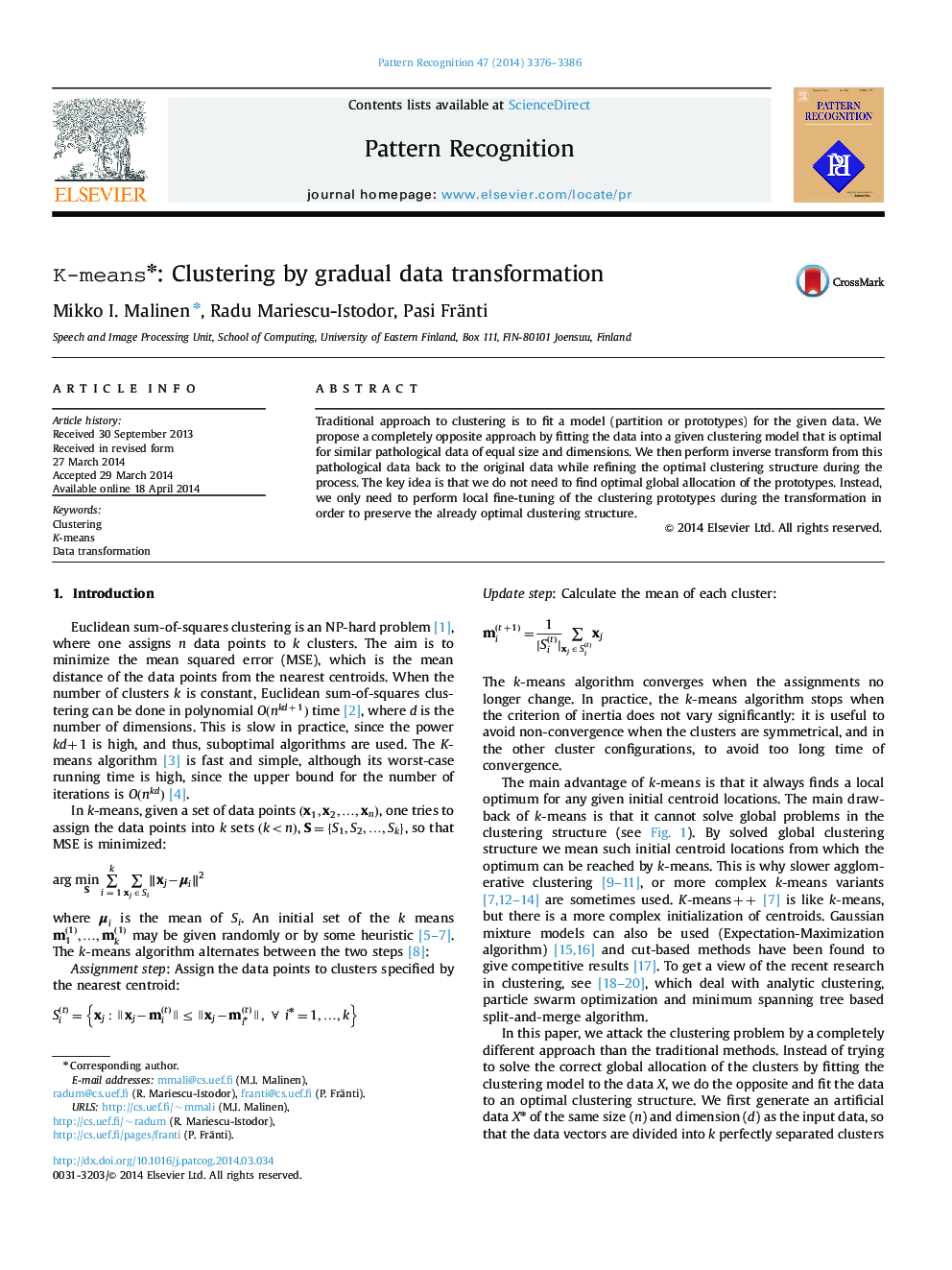| Article ID | Journal | Published Year | Pages | File Type |
|---|---|---|---|---|
| 530680 | Pattern Recognition | 2014 | 11 Pages |
•Traditionally clustering is done by fitting the clustering model to the data.•We propose an opposite approach by fitting the data into a given clustering model.•We perform inverse transform from this pathological data back to the original data.•We refine the optimal clustering structure during the process.
Traditional approach to clustering is to fit a model (partition or prototypes) for the given data. We propose a completely opposite approach by fitting the data into a given clustering model that is optimal for similar pathological data of equal size and dimensions. We then perform inverse transform from this pathological data back to the original data while refining the optimal clustering structure during the process. The key idea is that we do not need to find optimal global allocation of the prototypes. Instead, we only need to perform local fine-tuning of the clustering prototypes during the transformation in order to preserve the already optimal clustering structure.
